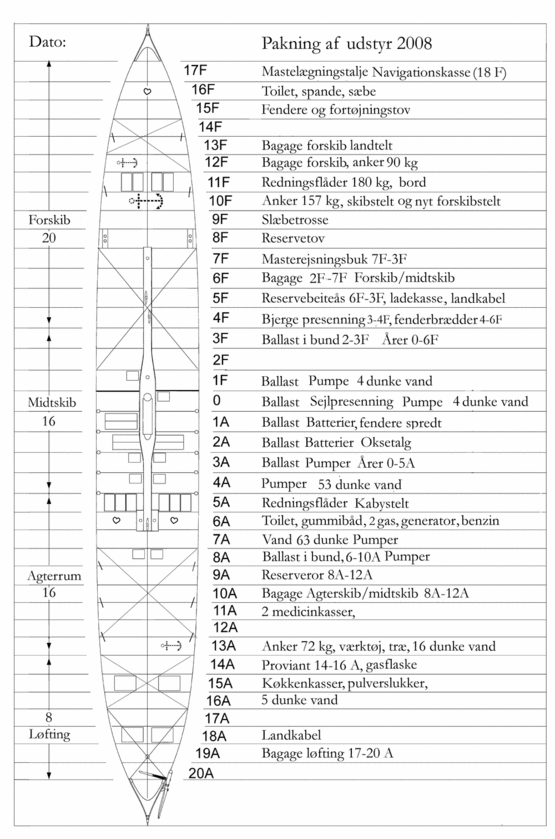We believe the original Sea Stallion’s sail had an area of about 112 square meters. The size and form of the sail make it possible to sail with wind coming from any direction (apart from directly ahead, of course). For the ship to stay upright, the sail must have a counterweight in the bottom of the ship. That is why we use ballast.
The ballast means that the ship has a draught that gives the hull sufficient stability and grip in the water. On the other hand, it is also important to be able to row the Sea Stallion, and the lighter the ship is, the easier it is to row. But the ship must not be so light that it loses its grip in the water or heels over so much that the sail must be reefed too early. The optimum weight we want lies somewhere in between.
Apart from making the ship stable, the ballast also serves to bring the ship’s hull and sail into balance. That is what we call the ship’s trim. We cannot change the shape of the Sea Stallion’s hull or the size or form of its sail during a voyage. (We can take up this subject later on this webpage). Basically, all we can do is change the distribution of weight on board.
Under sail, the ship will turn into the wind if the weight is located too far forward. If the weight is too far aft, the ship will turn away from the wind. It is important that the ship is in trim, i.e. that the ship can sail straight even when sailing very close to the wind without needing adjustment to the course with the rudder.
If the Sea Stallion is not in trim, we will not be able to manoeuvre and sail optimally, no matter how skilled and well-trained the crew is. In the worst case, the ship will not “obey the rudder”, which can have very serious consequences.
So it is very important to keep a check on how much weight there is on board the Sea Stallion – and where it is located.
We have both stone ballast and cargo in the form of provisions, baggage, water, anchors and other equipment – as well as the 60-man crew who, in terms of trim, can be considered living ballast. The crew is easily moveable, so they can be put wherever they are needed. With the wind from the side or the bow, the crew sits as far out along the windward side of the ship (the side the wind is blowing from; the other side is the leeward side). These kilos are far more effective than dead ballast such as the stones fixed in the bottom of the ship (1 kg located at the side of the ship gives greater counterweight to the sail than 1 kg located on the keel). The crew can also move aft if we want to make the bow lighter so the ship can better cope with a high sea.
The cargo and ballast are placed as centrally as possible to give the ship a good turning centre and thus improve its manoeuvrability. That the ship is light in bow and stern also gives a smoother ride in the water, while heavy ends give heavy movements.
Everything is weighed before storage in the ship. The crew are weighed, with and without their luggage; so are the stones, the anchors, water, provisions, life rafts, etc., etc. That means that when we have the ship in optimum balance we know how much we weigh and where the weight is distributed in the ship. Last year we weighed:
Ship (hull, rigging, oars) 10.4 tons
Ballast 4.4 tons
Various equipment 5.4 tons
Crew 4.8 tons
Total displacement (weight) 25.0 tons
But the Sea Stallion’s trim is not ‘just’ a matter of the ship’s safety and sailing qualities – it is also important for the main purpose of the voyage: to answer the question “Have we reconstructed the original ship, Skuldelev 2, correctly?”
Experience so far has given positive answers: the ship is in trim.
We will return to the ship’s sailing qualities later on this webpage.
